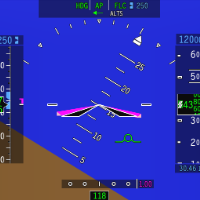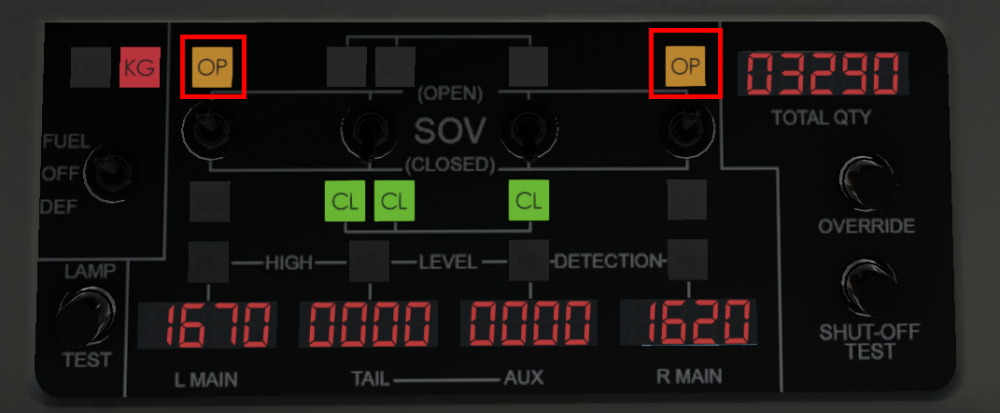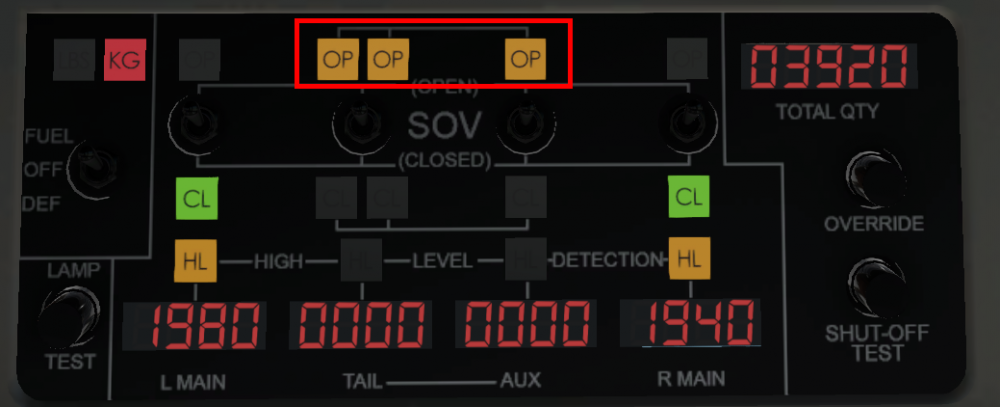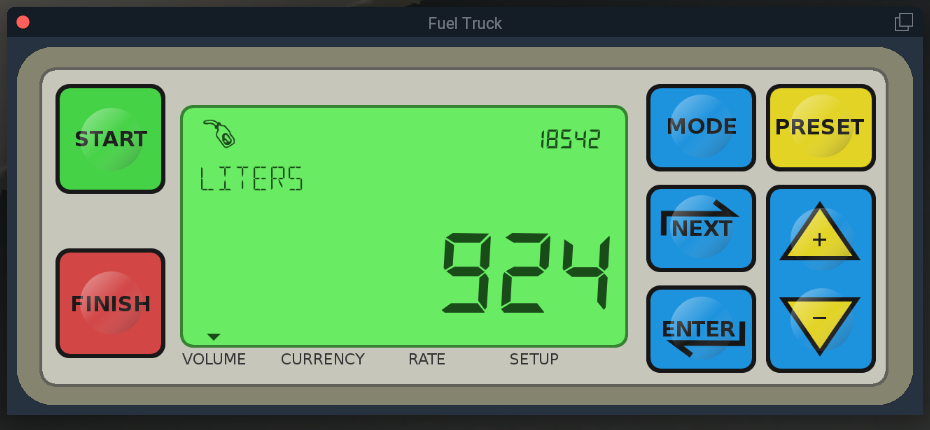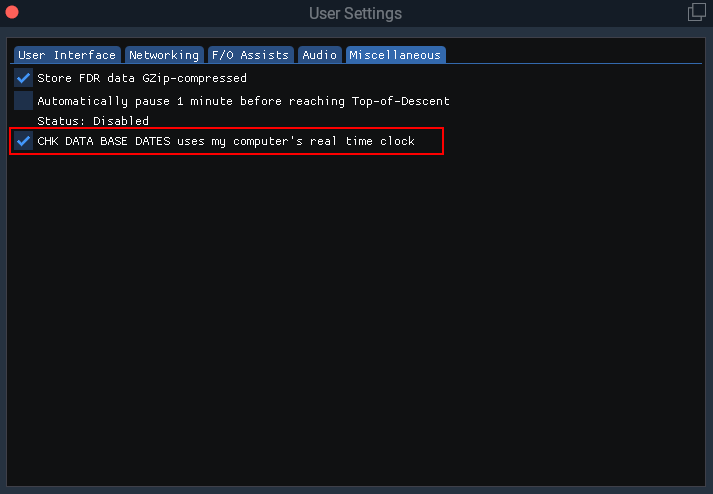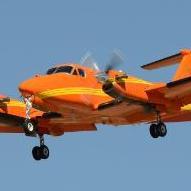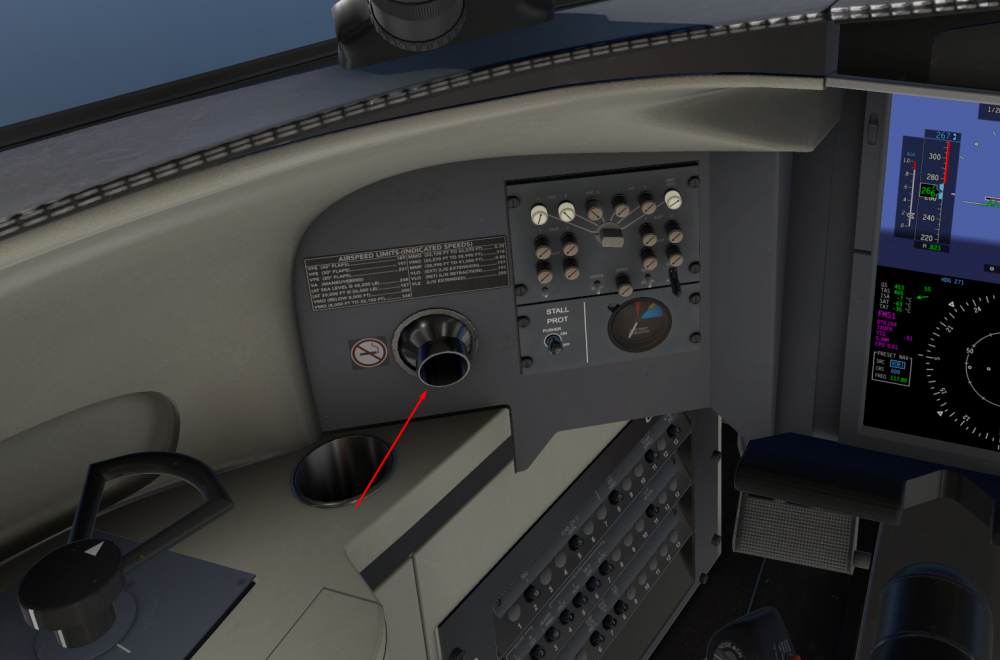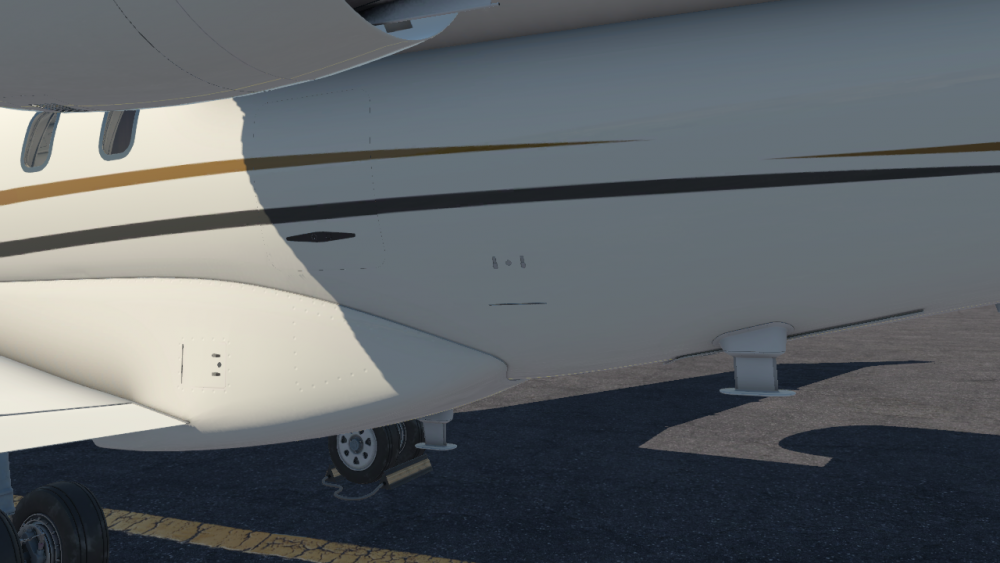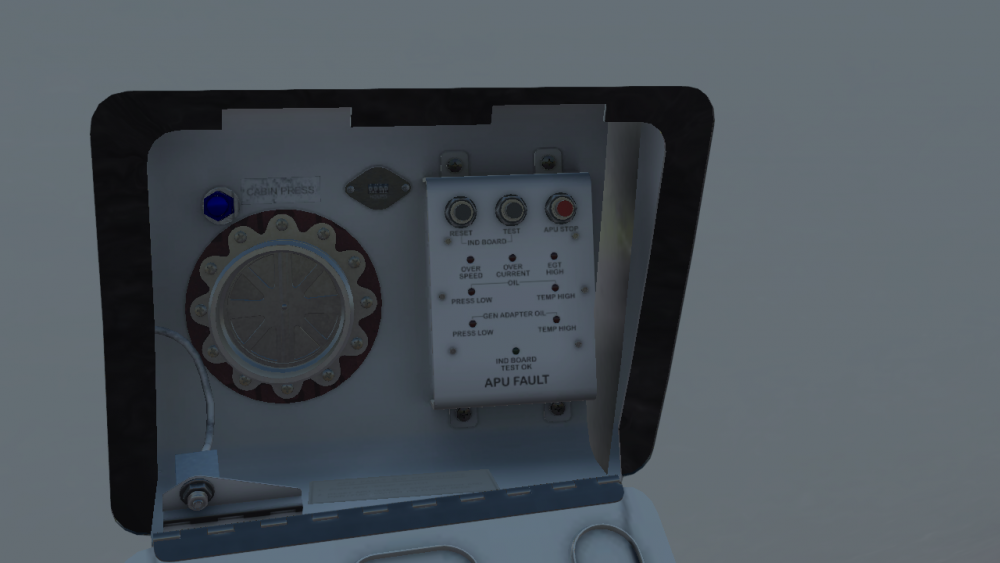Leaderboard
Popular Content
Showing content with the highest reputation on 01/08/2022 in all areas
-
Documents attached updated 20th December 2022. Latest versions are always available in ...\Aircraft\X-Aviation\CL650\Documentation directory. IMPORTANT: you must be signed in to download the PDFs below. Not a user yet? Head over to Sign Up. 1128340285_CL650FMSPrimer.pdf CL650 Operations Reference.pdf 1323904309_CL650ExpandedNormalProcedures.pdf CL650 Checklists.pdf CL650 Checklists - Printable.pdf CL650 Flexible Take-Off.pdf CL650 Shared Cockpit Quick Start Guide.pdf10 points
-
The Challenger has very good takeoff performance, so everything happens quickly. For the first few flights a heavier weight can help keep things in check. One of the key differences between A320/737 aircraft and the Challenger is there is no speed reference system on the Challenger. Instead the flight directors will give a fixed pitch target when pressing the TOGA buttons. Following the guidance from our subject matter experts, and adapting it for use in the simulation, we've got two easy ways to manage the initial climb, which can be remember as Pitch/Sync and FLC. Try both and see what works for you. Pitch / Sync: Takeoff and follow the initial flight director pitch target. Accelerate in the initial climb maintaining that pitch, retract the flaps at VFTO+5 then at a safe altitude hold the “Sync” button and lower the nose to about 10 degrees to start accelerating. If using autothrust it can be set to maintain a suitable speed, but your primary control is pitch, which can be adjusted easily by holding sync and flying the aircraft to the new pitch attitude. FLC: Takeoff and aim for the initial pitch target before selecting FLC mode to capture a speed of roughly V2 +20. At most weights this will result in a very steep climbout. At a safe altitude, increase the speed to lower the nose then retract the flaps at VFTO+5 A hybrid approach may be useful - remember unlike an airliner the Challenger has seats facing sideways - so while a space rocket climb profile can be fun, it’s unlikely to get repeat business for your VIP transport business.9 points
-
The Challenger can be hard work on the approach and landing, but when it all comes together it's very rewarding. All the beta testers had difficulty learning how to land, it's all part of the fun. On approach be aware that unlike aircraft like the 737, the pitch response to power is reversed, that means a power increase will see the aircraft pitch down for a moment. This can lead to an oscillation developing, so be sure to fly the pitch attitude accurately. If you find you're wobbling up and down, aim to make smooth power changes, and remember the HUD flight path vector is useful tool, but can get you into trouble too. A useful check is 0.6 on the AoA index on approach. If it's higher than that, you're too slow. Remember Vref +5, and check your weights on the approach ref page. For the landing flare, lift the nose to to arrest the rate of descent, starting at just below 40 ft. Make a smooth power reduction and fly the aircraft onto the runway. The pitch attitude in the flare is around 3 degrees, but look at the end of the runway, not the HUD! You'll have plenty of time for butter later, so for now put the aircraft down positively in the touchdown zone. If you go butter hunting, you'll only find little bounces - ask me how I know! Once you've landed, extend the flight spoilers (the ground spoilers are automatic, but the flight spoilers need to be raised by pulling the lever), use the reversers and you're down. And stay away from that HLIS button, it'll trick you into making your landings worse!8 points
-
A few pilots are having issues with AUX TANK HEAVY messages. This is totally understandable as (A) we didn't tell you how to work the refuelling system and (B) Good grief - never let a pilot near a refuelling truck! The docs will be reviewed to see if something better can be written, in the mean time... Refuelling - Easy Method Tell the fueller how much fuel you want. He's going to say "I'll start up the pumps". Wait for him to go downstairs, then only switch the L WING and R WING shut off valve (SOV) on. Check the OP lights (OPen) indicate. The fuel values are pressure operated, no refuel pump pressure, no valves open. The open setting on the switch can also "time out" and the valves won't open even when pressure is applied, so watch the panel until the valves indicate open. The wing tanks will fill, the HL (high level = full) lights will indicate and the fueller will tell you he's done. If you don't have enough fuel, tell him to keep pumping, and this time open the TAIL and AUX valves together (always together - note the white line on the panel between TAIL---AUX indicating they work together. Again, watch the panel until the valves indicate OP. If you don't have all the open lights on, the fuel balance between aux and tail will be incorrect. When the fueller finishes this time and you have enough fuel, close the SOVs and switch the fuel switch off. You cannot defuel in the simulation, it's virtually impossible in the real world outside of maintenance operations. If you want to help the fueller out, you can work the pump yourself using the menu Challenger 650 \ Ground Services \ Refuel \ Refuel Truck. It's fairly simple, like a fancy gas pump! The pump symbol at the top left of the display indicates the pump is running. Start and Finish are the only buttons you need for basic operation. But I've still got AUX TANK HEAVY when refuelling on the ground! Did you land or start refuelling with a significant amount of fuel in the aux tank? You may need to balance the aux and tail fuel when refuelling to keep the aircraft in trim. To do this, ask the fueler to start the pump, on the refuelling panel switch only the TAIL SOV to open and then press and hold the override button. With this button you have great power, but also great responsibility - be very careful! Refuel with the override button pressed until the AUX TANK HEAVY message disappears, then resume normal fuelling if required.6 points
-
4 points
-
An Expanded Procedures is provided to help you accomplish every action in the Challenger. These Expanded Procedures follow the checklist structure exactly, but have additional guidance on how to accomplish each action. Follow the first few items on the procedure to get the avionics powered up. Once all the avionics are on the checklist is available on the MFD, and from this point the virtual First Officer will be able to read the checklist to you so you don’t loose your place. The Expanded Procedure guidance is also available as a popup hint for each item. You can easily ask the First Officer to start the checklist with any key or button bound to the command CL650 \ Checklist \ Confirm checklist item. Don’t worry about learning every item in the checklist the first time through. Have fun, pick a new system to focus on each time, and soon it will all become natural. When you've got it, disable the hint images and you're on your own!4 points
-
4 points
-
Yes they are, and we should have put them in the Operations Reference doc. Sorry about that. PBN/A1L1B1C1D1O1S2T1 M-SBDE1E2E3FGHIJ1J4J5J7M3RWXYZ/LB1V1D13 points
-
Great work on this plane - I am loving it. As a primary VR flyer, I wanted to give my feedback on my experience so far (I know there have been other threads, but they are closed before others can give feedback - understandably to keep them under control). I think the VR experience for a day-one release is fantastic. No issues with flying the plane. My only feedback would be: 1. The ability to communicate with the fuel truck, ramp worker, and use the cell phone inside VR (make the menus similar to the study menus that are usable in VR). This would only apply once inside the cockpit. 2. Several 3-way test rocker switches do not centre in VR. I *think* this might be an X-Plane VR controller limitation and not an issue with the plane. 3. Limit the knob rotation sensitivity (although this is something a user can easily accomplish to their own liking in VR config) In terms of movement inside the aircraft - for me it's not as huge a deal. Yes, VR hotspots would be appreciated (maybe even just one near the door so that it can be closed without having to leave VR). Again, just some items to add somewhere on a future to-do list. Nothing mission critical or immersion-breaking. This plane handles great in VR (the HUD is fantastic!) and I am having lots of fun. Thanks again for all of your hard work.2 points
-
To set the park brake you need to have hydraulic pressure (Pump 3A on). Then hold the toe brakes, and set the parking brake while holding the toe brakes. If you simply apply the park brake, there will be no braking effect, and Jenny won't be happy you messed up her ramp when the chocks are removed.2 points
-
Hey, If you're getting "Check APT OAT" somepoint towards the end of your flight, then that's prompting you to enter the airport OAT for temperature compensation, should you wish to use it. On the CDU, it's on the Index Page 2, on the LSK 5 R "Temp Comp". When you go into this, you can just turn it off, so it stops nagging you for that flight by clicking "Temp Comp On/Off" under LSK 4 R, or you can enter the airport OAT under LSK 2 R to get temperature compensated altitudes. Edit: Link to Totoritko talking about temperature compensation during one of the release streams (timestamped to 58 mins 34 seconds)2 points
-
I have a really big issue with my NWS. After I remove the chocks, and before I even give thrust to move forward at all, the nose wheel turns 90 to the right. At this point in time I had the NOSE STEER armed per the checklist. I turned the NOSE STEER off and taxied by only using differential brakes, this was mildly inconvenient. I thought the issue would go away when I reloaded the game and plane. Do my disbelief, the issue still persisted. I then completed a flight, thinking that the issue would somehow resolve itself in flight, it did not. I landed the plane with NOSE STEER ARMED, as prescribed in the checklist, and about 2000 ft after landing roll the nose gear flung 90 degrees to the right and left me in the grass scratching my head. I proceeded to look from an external view of this issue and the gear is clipping through itself basically being stuck to the right. Sorry for the long explanation of my problem, I hope there is a fix to this or I'm just simply missing a step somewhere!2 points
-
Can get pretty bad for me - https://streamable.com/zqew7o I really hope AMD get to fixing this... I have sent them a support request. I am on the latest AMD drivers, on the RX 580.2 points
-
2 points
-
A paint kit will be made available, yes. I don't have a timing for that, but I'd suggest you're looking at days, not weeks.2 points
-
The avionics will look at the X-Plane Date, when checking nav data validity. If you regularly load X-Plane to a date or month that's different to the nav data you have, then look for this option in the Challenger 650 menu, User Settings, Miscellaneous. This will force the avionics to compare nav data with the real date, not the X-Plane date.2 points
-
State Saving The aircraft autosaves the state, position and trajectory every 20 seconds while in flight or upon entering a runway, and on approach passing 1000 feet above airport elevation. Additionally you can manually save a state and name it. In the unlikely event of a crash you can resume your flight from where you left off by reloading the aircraft and ensuring the “Restore Position and Trajectory” checkbox is selected. State Tracking In most simulated aircraft there are no consequences for leaving a battery on or quitting the sim without a proper shut down. You may be unhappy to discover the state of your aircraft if you do this. Like the TBM, the aircraft tracks its own state and if you fail to shut down the aircraft properly your batteries will be discharging while you are away. Reloading States The aircraft state can be reloaded, optionally with the saved position and trajectory. This allows states such as "Ready to taxi" to be created at one particular airport, then at a later time load the aircraft to a spot at another airport and reload the state without using the saved position. This is a quick way to create scenarios like "Ready for takeoff". Note that when a state is reloaded, the simulation time is not automatically set, so if you are resuming in-flight it will be necessary to set the sim time correctly after loading the state. This may cause a momentary loss of GPS position.1 point
-
Ok, why do i get a flashing ATS Fail? As soon as i power the aircraft it start flashing FAIL and it wont stop. Been watching youtube for 4 hours now and not even once that thing flash Fail, it just a black panel until he clicks TOGA and it shows N1 TO, but not for me.1 point
-
The CL650 automatically selects Experimental Flight Model - you don't need to do anything with X-Plane settings.1 point
-
1 point
-
Yes once it has an almanac downloaded it will keep it until it can replace it.1 point
-
Hey Oisin! thanks for the reply. Just jumped back on and realised its an issue with the GHD plugin by jar design, when that plugin is off, everything works as normal! Cheers man1 point
-
Disregard this post, I pulled the landing gear emergency extension instead of the parking brake1 point
-
1) ATS Disengage - Advance thrust levers 2) Retract flight spoiler if in use 3) Pitch up smoothly at no less than vRef speed 4) Fly V2 + 10 minimum and retract flaps to 20 5) Fly MAP or as instructed by ATC1 point
-
Traffic patterns aren't common on this type of aircraft so no real procedure exists. My advice is to enter your departure runway and arrival runway. Do not insert an instrument procedure, use the visual approach. This will allow you to display the extended centreline of the runway on your MFD for situational awareness. Calculate your performance on the ground and be wary of the aircraft's performance on departure.1 point
-
I agree with that, the throttle handlind in VR deserves a bit more love As @JC_YYZ mentioned with point 3 - most rotation knobs are for me waaay to sensitive, especially dialing things on PFD/MFD (settings) is currently somewhat painfull. In addition, it seems there is currently no way to get the interactive checklist in VR? Or am I somewhat blind? Also currently only the "Ergonomic Yoke" mode seems to be included, not the realistic one which would improve the overall experience imo. Also the Chart zooming does not seems to work in VR currently if I got it right. Interstellar job guys, congrats, wow!1 point
-
1 point
-
You can assign one. In the keyboard or joystick settings, look under CL650 and then checklist. there are functions to bind do any key or joystick button for next item, next checklist, etc.1 point
-
Hello, The ATS will fail when you test the reversers as part of the normal procedures. When the annunciator says FAIL disconnect the ATS using the buttons on the back of the throttles (or a key binded to autothrottle disconnect). Then you may re-enable it by pressing TOGA. Brgds1 point
-
I did not activate the VNAV mode Thank you very much, now I understand this lovely bird a little better!1 point
-
1 point
-
When switching from internal to external view on the ground or in flight I get some stuttering (FPS drop) for a few seconds.1 point
-
Seem to do it while the aircraft external textures are still "loading". Seems to take them a bit and every time I go from inside to outside. This does not happen with any other aircraft.1 point
-
1 point
-
1 point
-
My X-Plane is completely stock other than the challenger, this has persisted over multiple X-Plane and Windows installs.1 point
-
Please be sure to enable a VPN on your computer. The aircraft needs to talk to https://navcen.uscg.gov to download a GPS almanac - this is needed to simulate GPS satellite positions.1 point
-
Once you've got the engines running once, go to Airframe Manager and save a state "Engines Running". You can then reload that at any point. You can also load it without selecting "Restore Position and Trajectory" and you can start that Engines Running state anywhere. It's a slightly DIY approach to an ready to go state, but as so much of the avionics are set to your personal preference it's probably better to have a one-time setup like this than have something fixed and unchangeable for a state. Hope this helps for now. Having some ready to go states in the non-career mode is something the testing team have requested too - the hope is the developers will be able to get a feel for how people are using this feature in the first few weeks, and decide how best to proceed. A bit more info about state saving here:1 point
-
1 point
-
It seems like a mistake was made in fuelling, but that's OK, as there wasn't much documentation provided about that. I'll write up a very quick guide ASAP, and post and pin it in this forum.1 point
-
Different SOPs use different values. One operator uses a flat 90.2 in TGT and others select the TAKE OFF thrust limit for go around. Either method is appropriate.1 point
-
1 point
-
Is it possible in the future to get a few improvements for us VR users such as the ability to teleport around the cabin (therefore being able to also close the doors) and maybe a way via the menus to interact with the refueler and cell phone for instance? Currently there's no way to do any of that in VR. I'm not fussed if the FBO doesn't work, but these are a bit important to be left out. The fire test switches also cannot be centered in VR to turn them off.1 point
-
Honeycomb Alpha Avionics was the one. Weird because I didn't even think I had it bound1 point
-
1 point
-
Ah, so if you're finished with the ATS you need to press the ATS disconnect button. The binding is CL650 \ pedestal \ throttle \ auto-throttle disconnect.1 point
-
Got it. That worked and the fuel truck disappeared and passengers are now boarding. Thanks for the quick help. Great job. BTW, other than FBO, VR is working quite well and extremely crisp and smooth. Well done to everyone!1 point
-
When the APU encounters a fault, you'll need to hop out of the plane and reset the APU ECU to clear the fault. Go to the tail of the aircraft near the cargo door, pop the latches and pull the little door open under the left engine nacelle: Inside you'll find a panel with 3 buttons. Push the "RESET" button, close it up and you should be good:1 point
-
And generally speaking the fuel load has the greatest impact on the cg. The fueling process in the aircraft is setup to maintain the cg within limits. For now 5.5-5.7 units of trim is perfectly suitable for all fuel loads. We are planning on releasing a trim table in the future.1 point
-
This plane is out of this world. I assigned keys to change the heading bug, alt bug, etc. But if I hold the assigned key the bug only moves once, so I must press the key a zillion times to change the bugs.1 point



